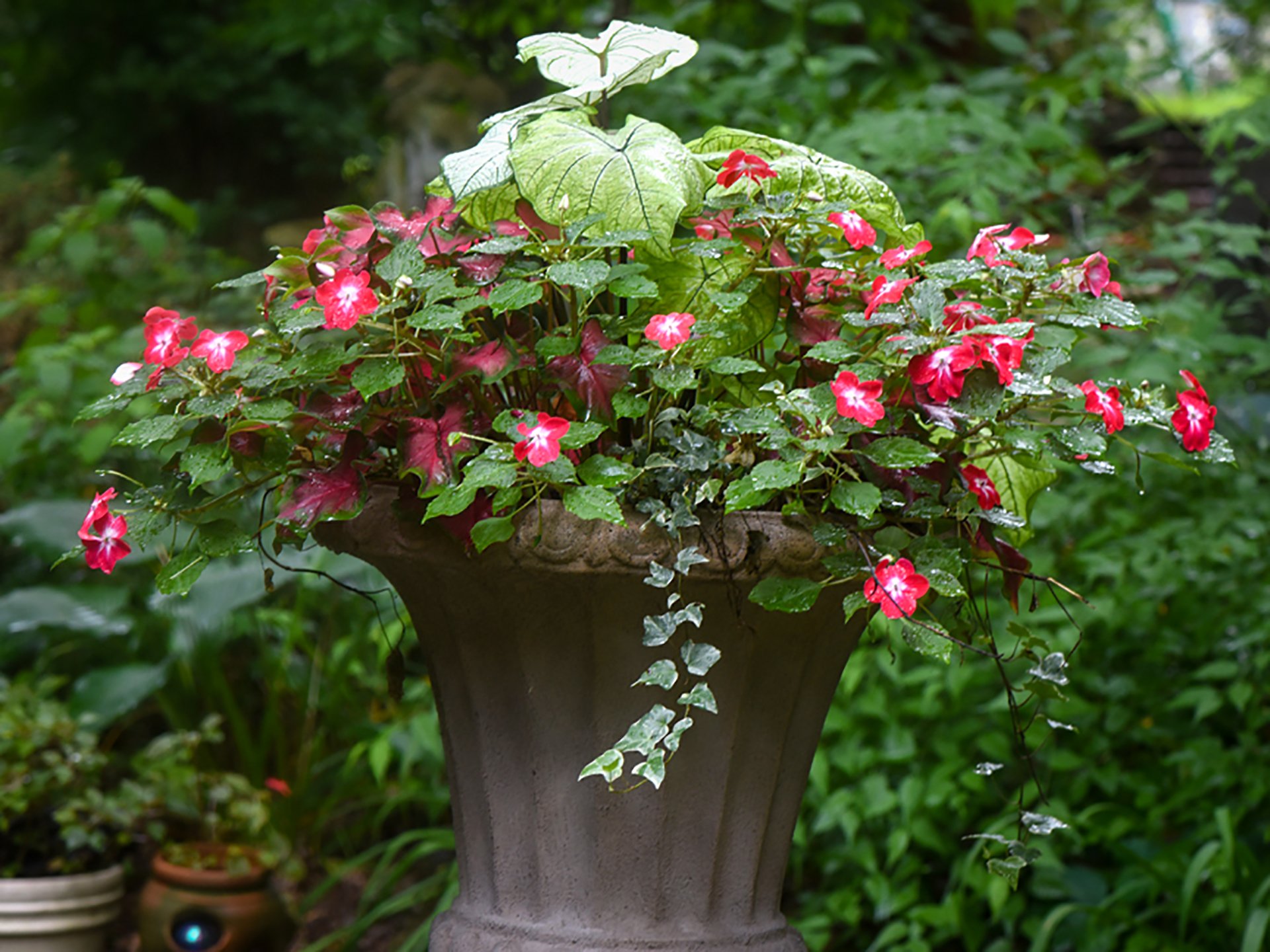Everything You Need to Know About Container Gardening
Whether it’s a huge garden or small city lot, containers allow gardeners to add plants to the garden with more control over their water and nutrients than if planted directly in the soil.
Just about anything that can be grown in the ground can be grown in a container. It’s important to use the right sized container for the right plant. A full-sized tomato would benefit from a 15-gallon pot or larger. Lettuce and pansies could share space in an 18-inch container. A little sedum could fit in an old boot.
The great part about growing in pots is that the gardener controls the water and fertilizer — but that's also the bad part about growing in pots. Early in the season when rain can be plentiful, container gardening is a breeze. Later in the summer, it can be tough as some of them will need to be watered daily.
Drainage is a must; without it, a wet summer will fill the pots causing root rot and other problems. Most containers will have hole in the bottom, or one can be created via a power drill. If a ceramic pot needs holes, find someone with the right equipment to get the job done.
Filling the bottom of a container with Styrofoam peanuts or pieces of broken pots and then adding a planting mix in a pot without drainage can work, unless there’s a lot of rain. I’ve tried it, but a few storms can fill up a container and cause all the problems listed above.
There’s a really simple design principle for containers, which actually works in garden beds, too. Start by planting something big and spectacular in the center of the pot, called the thriller. Then surround it with smaller plants, called fillers. Finally, the edges of the pots are filled with trailing plants called spillers. The same technique can be used with a container set up against a wall, with the thriller in the back of the pot and others planted from tall to small.
Sun lovers should be grouped together and shade plants used in consort, it just makes sense as they require the same conditions to thrive.
Most vegetables will thrive in containers, but it’s tomatoes though that need special care. They can never be allowed to dry out or they could get blossom end rot. It’s a brown or black lesion on the bottom of the tomato caused by a lack of calcium. The nutrient is usually there, but dry soil won’t allow the plant to uptake the calcium.
Don’t add egg shells, Epsom salts or Tums — they won’t help.
Just keep the pot watered. A 15-gallon pot is large enough that it will not need moisture added as often as a smaller pot.
The other option is a self-watering container. These have a reservoir at the bottom, and as long as it’s filled, the planting mix won’t dry out. The Earth Box is one of the most popular, but there are many other brands available.
Herbs are perfect to grow in pots and place the container right outside of the kitchen for quick access to fresh ingredients for a recipe.
There’s still plenty of time to plant tomatoes, peppers and other vegetables. Try vine crops on the edges of a veggie container as a spiller.
How do you know when it's time to water any container?
Stick your finger down as far as it will go into the soil and if the mix is dry, get the hose out.
Fill the pots with a good planting mix from a local garden center, but get it moist first before adding it to the container. Potting or garden soil is too heavy and can become waterlogged.
Pitt Moss is made in Ambridge, Pa., out of recycled newspaper and uses two-thirds less water than conventional soil mixes. I’ve been using the Pitt Moss Plentiful in my pots for several years, and it’s been a great addition to my container garden. Not having to water as often provides some flexibility when rain is scarce.
A good, organic liquid fertilizer will keep the plants thriving, as they will use up the nutrients in the planting mix over the summer. Drammatic from the Dramm Corporation is my favorite, but there are many brands available at local nurseries. Most are fish or kelp based, have a slight odor that dissipates quickly and safely feed the plants. I like to find a concentrate and mix it with water for the most bang for the buck.
By using organic products, like this type of fertilizer, everything from microbes up to earthworms are unaffected and will help plants grow.
Anything can be a container — from watering cans to toilets (a classic) — to old garden carts and everything in between. You’re only limited by your imagination.
With much of the garden planted, containers allow gardeners to keep planting until areas are open again.
As long as plants are fed, watered and in the right place, a container garden is a great choice for the landscape.




